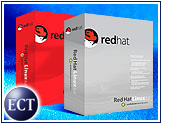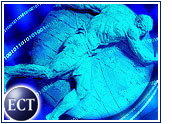
While there is no single “gold standard” for online design, experts say there are a number of high-quality Web sites that manage to approach that ideal by excelling in the areas of functionality, style and ease of use.
There are few sites that manage to succeed in all three areas, analysts told the E-Commerce Times, but plenty that make their mark in one or two of the categories.
Giga Information Group analyst Ron Rogowski said operators of the best sites focus on clear navigation, beginning with the home page, and keep flashy graphics and other gimmicks to a minimum.
Unless users are coming to a site specifically to be entertained or check out a developer’s animation talents, anything that detracts from customer service needs to be eliminated, analysts said.
“Good Web design is about designing for a goal-oriented use of your site,” said Rogowski, operations manager of Giga’s Web Site ScoreCard service. “You have to base the design on the reasons why the customer has chosen to visit your site.”
At Your Service
For all kinds of sites, ranging from e-commerce to personal finance, experts agree that customer service remains Web design’s biggest problem area because users often have to spend too much time searching for basic information.
“The one thing lacking at most sites is adequate service,” said Lisa Melsted, an Internet strategies analyst with the Yankee Group. “Many times, it’s very hard to even find the help page.”
The Web’s best sites avoid that problem by giving online customers the same consideration they give to customers visiting an offline business, especially first-time users. They also keep elegant style and visual aesthetics in mind, and know how to leave a good impression.
Rogowski said that Amazon.com (Nasdaq: AMZN) has built its reputation on its top-notch, easy-to-use transaction features. He also pointed to Dell Computer (Nasdaq: DELL) and Cisco Systems (Nasdaq: CSCO) as Web sites that do a good job of setting out from the start what the companies are about and what users can do on their sites.
Searching for Gold
Among e-commerce sites, Melsted said the one run by outdoor goods retailer REI stands out for its simple navigation and other features that enhance the visitor’s shopping experience.
In a recent research report, Melsted pointed to the site’s instructional area, which explains how to buy catalog items online, as well as the special sale offers the company prominently displays front center on its the home page.
REI also has pages with informational articles on activities, product specs and comparisons, as well as zoom-in photos and an “outlet store” section with reduced-price items. Melsted said the site does an exceptional job of community building, with features like “Learn and Share,” where users can share tips, find partners for outdoor activities, and post trip logs and photos.
REI also posts educational articles on subjects like fixing bicycle brakes and buying a car rack for a kayak. It also offers plenty of live and online help for visitors, with domestic and international phone numbers posted.
Honorable Mention
Also mentioned in the Yankee report was the site of electronics retailer Best Buy, which includes an online “shopping assistant.” With this feature, the site asks a series of questions about the products visitors are thinking of buying, and makes suggestions to help them choose the one that is right for them.
Best Buy also has a comprehensive security and privacy policy, as well as an information center that deals with repairs and service plans, the report said.
Melsted pointed to the Williams-Sonoma site as another laudable e-commerce presence.
The site features a clean look, easy navigation and a good customer service section. Melsted said the site has a “one-stop shopping” feature that lets users choose multiple items from a page simultaneously, rather than taking them individually to the checkout.
ISP Stand-Outs
Among ISP companies, Melsted noted that the portal site of EarthLink is tough to beat for its user-friendly interface, navigation and customization features. The site lists the times when support is available by e-mail, chat and phone, reports wait times for call-center tech support, and even provides server status to let customers know when outages have occurred.
“EarthLink’s service and support section is among the most comprehensive we’ve seen,” Melsted said.
The Yankee report said EarthLink’s portal competitors excel in other areas — AOL for navigation, MSN for personalization and Yahoo! (Nasdaq: YHOO) for functionality and ease of use.
Money Matters
Several Web sites are targeting consumers who are looking for answers to theirpersonal finance questions, with varying degrees of success when it comes to Web design. Although Personal finance sites are seeing steadily growing use, Melsted said that consumers are still wary of entrusting money management to online services.
The Yankee report describes the Quicken.com site, run by financial software maker Intuit, as “an extensive online resource” with personalization capabilities, quotes and news, editorials from financial experts, and trading alerts.
One of Quicken.com’s unique features is its “One-Click Scorecard,” a research tool that applies noted stock experts’ analytical techniques to identify top stocks.
Bottom Line
The sites of American Express and discount broker Charles Schwab are also feature-packed and easy to use, Melsted said.
Rogowski cited the American Express site for its well-structured home page that clearly orients users, although there is less help in getting around once users are inside. He also praised the Discover Card site for its account-management features.
Rogowski also said Wells Fargo has excellent financial tools on its site, although they are tough to access from the home page.















































Social Media
See all Social Media